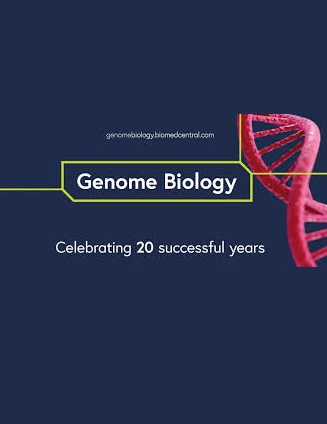Predicting adenine base editing efficiencies in different cellular contexts by deep learning
IF 10.1
1区 生物学
Q1 BIOTECHNOLOGY & APPLIED MICROBIOLOGY
引用次数: 0
Abstract
Adenine base editors (ABEs) enable the conversion of A•T to G•C base pairs. Since the sequence of the target locus influences base editing efficiency, efforts have been made to develop computational models that can predict base editing outcomes based on the targeted sequence. However, these models were trained on base editing datasets generated in cell lines and their predictive power for base editing in primary cells in vivo remains uncertain. In this study, we conduct base editing screens using SpRY-ABEmax and SpRY-ABE8e to target 2,195 pathogenic mutations with a total of 12,000 guide RNAs in cell lines and in the murine liver. We observe strong correlations between in vitro datasets generated by ABE-mRNA electroporation into HEK293T cells and in vivo datasets generated by adeno-associated virus (AAV)- or lipid nanoparticle (LNP)-mediated nucleoside-modified mRNA delivery (Spearman R = 0.83–0.92). We subsequently develop BEDICT2.0, a deep learning model that predicts adenine base editing efficiencies with high accuracy in cell lines (R = 0.60–0.94) and in the liver (R = 0.62–0.81). In conclusion, our work confirms that adenine base editing holds considerable potential for correcting a large fraction of pathogenic mutations. We also provide BEDICT2.0 – a robust computational model that helps identify sgRNA-ABE combinations capable of achieving high on-target editing with minimal bystander effects in both in vitro and in vivo settings.通过深度学习预测不同细胞环境下腺嘌呤碱基编辑效率
腺嘌呤碱基编辑器(ABEs)能够将A•T碱基对转化为G•C碱基对。由于目标基因座的序列会影响碱基编辑的效率,因此人们努力开发能够基于目标序列预测碱基编辑结果的计算模型。然而,这些模型是在细胞系中生成的碱基编辑数据集上训练的,它们对体内原代细胞碱基编辑的预测能力仍然不确定。在本研究中,我们使用SpRY-ABEmax和SpRY-ABE8e进行碱基编辑筛选,针对细胞系和小鼠肝脏中的2195个致病突变,共12,000个引导rna。我们观察到ABE-mRNA电穿孔进入HEK293T细胞产生的体外数据集与腺相关病毒(AAV)或脂质纳米颗粒(LNP)介导的核苷修饰mRNA递送产生的体内数据集之间存在很强的相关性(Spearman R = 0.83-0.92)。随后,我们开发了BEDICT2.0,这是一个深度学习模型,可以在细胞系(R = 0.60-0.94)和肝脏(R = 0.62-0.81)中高精度地预测腺嘌呤碱基编辑效率。总之,我们的工作证实,腺嘌呤碱基编辑在纠正大部分致病突变方面具有相当大的潜力。我们还提供了BEDICT2.0——一个强大的计算模型,有助于识别能够在体外和体内环境中以最小的旁观者效应实现高靶向编辑的sgRNA-ABE组合。
本文章由计算机程序翻译,如有差异,请以英文原文为准。
求助全文
约1分钟内获得全文
求助全文
来源期刊

Genome Biology
Biochemistry, Genetics and Molecular Biology-Genetics
CiteScore
21.00
自引率
3.30%
发文量
241
审稿时长
2 months
期刊介绍:
Genome Biology stands as a premier platform for exceptional research across all domains of biology and biomedicine, explored through a genomic and post-genomic lens.
With an impressive impact factor of 12.3 (2022),* the journal secures its position as the 3rd-ranked research journal in the Genetics and Heredity category and the 2nd-ranked research journal in the Biotechnology and Applied Microbiology category by Thomson Reuters. Notably, Genome Biology holds the distinction of being the highest-ranked open-access journal in this category.
Our dedicated team of highly trained in-house Editors collaborates closely with our esteemed Editorial Board of international experts, ensuring the journal remains on the forefront of scientific advances and community standards. Regular engagement with researchers at conferences and institute visits underscores our commitment to staying abreast of the latest developments in the field.
 求助内容:
求助内容: 应助结果提醒方式:
应助结果提醒方式:


